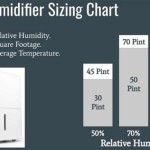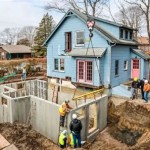How to Fix Water Seepage in Basement Floor
A wet basement can be a significant problem for homeowners, leading to mold growth, structural damage, and unpleasant odours. Water seepage through the basement floor is a common issue, and it's essential to address it promptly to prevent further complications. This article will delve into the causes, solutions, and essential preventative measures for water seepage in your basement floor.
Understanding the Causes of Basement Water Seepage
Before tackling the problem, it's crucial to understand the root cause of water seepage. The most common culprits include:
- Poor Grading: Inadequate grading around the house can direct rainwater towards the foundation, creating pressure that forces water through cracks or openings. This is particularly problematic when the ground slopes towards the foundation.
- Cracked or Damaged Foundation: Cracks in the foundation walls or floor can allow water to infiltrate the basement. These cracks can be caused by shifts in the soil due to frost heave, tree roots, or settling of the foundation.
- Broken Gutters and Downspouts: Damaged gutters or downspouts that overflow or redirect water towards the foundation can lead to water ingress. The water can then soak into the soil, causing pressure on the foundation.
- Hydrostatic Pressure: High levels of groundwater can exert pressure on the basement walls and floor, forcing water into the structure. This is more common in areas with high water tables or saturated soil.
Once you've identified the source of the problem, you can move on to the most appropriate solution. This may involve addressing one or a combination of the above factors.
Solutions for Basement Water Seepage
Here are some effective solutions for dealing with water seepage in your basement floor:
1. Improve Drainage and Grading
Proper grading is essential to prevent water from pooling around your foundation. The ground should slope away from the house at a minimum of 6 inches per 10 feet. This will ensure that rainwater flows away from the foundation. You can achieve this by excavating the soil around your house and adding additional fill to create the necessary slope.
2. Repair Cracked or Damaged Foundation
Cracked or damaged foundations need to be repaired to prevent further water infiltration. The repair process will depend on the severity of the damage and may involve injecting polyurethane foam, using epoxy resin, or replacing damaged sections of the foundation. Consult a structural engineer or foundation repair specialist for professional assessment and repair.
3. Install a French Drain System
A French drain system is an effective solution for redirecting groundwater away from the foundation. This system involves digging a trench around the perimeter of the foundation and backfilling it with gravel. A perforated pipe is then placed in the trench, allowing water to drain into the gravel. This system helps to reduce hydrostatic pressure and prevent water seepage.
4. Seal Cracks and Openings
Small cracks and openings in the basement floor can be effectively sealed using waterproof sealant. This can help prevent minor water ingress and reduce the risk of larger problems developing. Consider applying a sealant to the floor, walls, and foundation joints for a comprehensive approach.
5. Install a Sump Pump
A sump pump is a useful addition to manage excessive groundwater levels in the basement. It consists of a pit in the basement floor that collects water, and a pump that removes the water and discharges it outside the house. This can be particularly helpful in areas with high water tables or during heavy rainfall.
Preventative Measures for Basement Water Seepage
Preventing water seepage in the first place is always better than dealing with the problem once it occurs. The following preventative measures can minimize the risk:
- Regular Gutter and Downspout Maintenance: Ensure that your gutters and downspouts are clear of debris and functioning correctly to prevent overflowing and redirecting water towards the foundation.
- Plant Trees Away from the Foundation: Tree roots can grow under the foundation and cause cracks, creating pathways for water infiltration. Plant trees at least 10 feet away from the foundation.
- Landscape for Proper Drainage: Plan your landscaping to ensure adequate drainage around the house. Avoid planting dense vegetation close to the foundation, which can impede water flow.
- Regular Inspections: Regularly inspect your basement for any signs of water seepage, cracks, or damage. Early detection can help prevent major problems.
By understanding the causes of water seepage and implementing the appropriate solutions, you can effectively address this problem and create a dry and healthy basement space. Regular maintenance and preventative measures are crucial to avoid future issues. It is always advisable to consult with a qualified professional for a thorough assessment and the most suitable solutions for your situation.

Water Coming Up From Basement Floor Where Is The Leak How To Stop It

Wet Basement Diy Repair Guide Radonseal

What Causes Leaky Floors In Basements Fixing Leaking Basement

7 Reasons Water Is Seeping Through Your Basement Floor

What Causes Leaky Floors In Basements Fixing Leaking Basement

The Best Methods For Basement Leak Repair Acculevel

Finding And Fixing Basement Leaks How To Waterproof Your

Help My Basement Leaks When It Rains News And Events For Systems Inc

Get To Know How A Leaky Basement Can Ruin Your Home

How Can I Keep Water Out Of My Foundation Ohio Basement Systems
Related Posts







